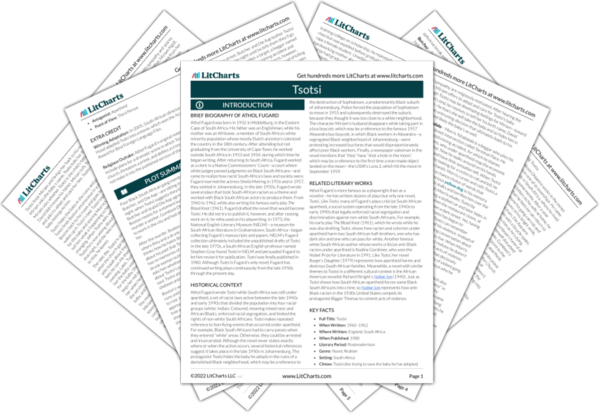By describing what people habitually do on Saturdays, the novel reminds us that most people, not just Tsotsi, follow habits or patterns of behavior. Tsotsi’s secretiveness when he gets back to his room reminds the reader that he, by contrast, is doing something unusual and strange for him: assuming a caretaking, parental role. Tsotsi’s association of the baby with “man”—that is, with all mankind—suggests that in addition to having stereotyped identities and real, individual identities, people can also have true group identities like “human.” By attributing the group identity of “man” to the baby—an identity that Tsotsi, of course, also shares—Tsotsi may be starting to identify with and thus sympathize with the baby.


